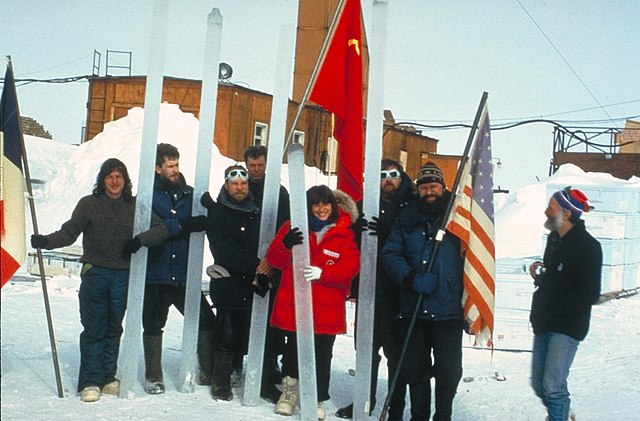Vostok Station is a Russian research station in inland Princess Elizabeth Land, Antarctica. Founded by the Soviet Union in 1957, the station lies at the southern Pole of Cold, with the lowest reliably measured natural temperature on Earth of −89.2 °C. Research includes ice core drilling and magnetometry. Vostok was named after Vostok, the lead ship of the First Russian Antarctic Expedition captained by Fabian von Bellingshausen. The Bellingshausen Station was named after this captain.
Elevated photo of Vostok Station
Ice cores at Vostok, with a portion of the station behind
Panoramic photo of Vostok Station showing the layout of the camp. The striped building on the left is the power station while the striped building on the right is where researchers sleep and take meals. The building in the background with the red- and white-striped ball on top is the meteorology building. Caves were dug into the ice sheet for storage, keeping cores at an ideal −55 °C (−67 °F) year-round. (Credit: Todd Sowers LDEO, Columbia University, Palisades, New York)
420,000 years of ice core data from Vostok, Antarctica, research station. Current period is at left. From bottom to top: insolation at 65°N due to Milankovitch cycles (connected to 18O); 18O isotope of oxygen; levels of methane (CH4); relative temperature; levels of carbon dioxide (CO2)
Research stations in Antarctica
Multiple governments have set up permanent research stations in Antarctica and these bases are widely distributed. Unlike the drifting ice stations set up in the Arctic, the current research stations of the Antarctic are constructed either on rocks or on ice that are fixed in place.
"Omond House", the first permanent base, constructed in 1903 by the Scottish National Antarctic Expedition
View of Chile's Captain Arturo Prat Base, established in 1947





